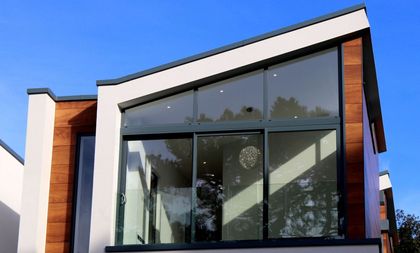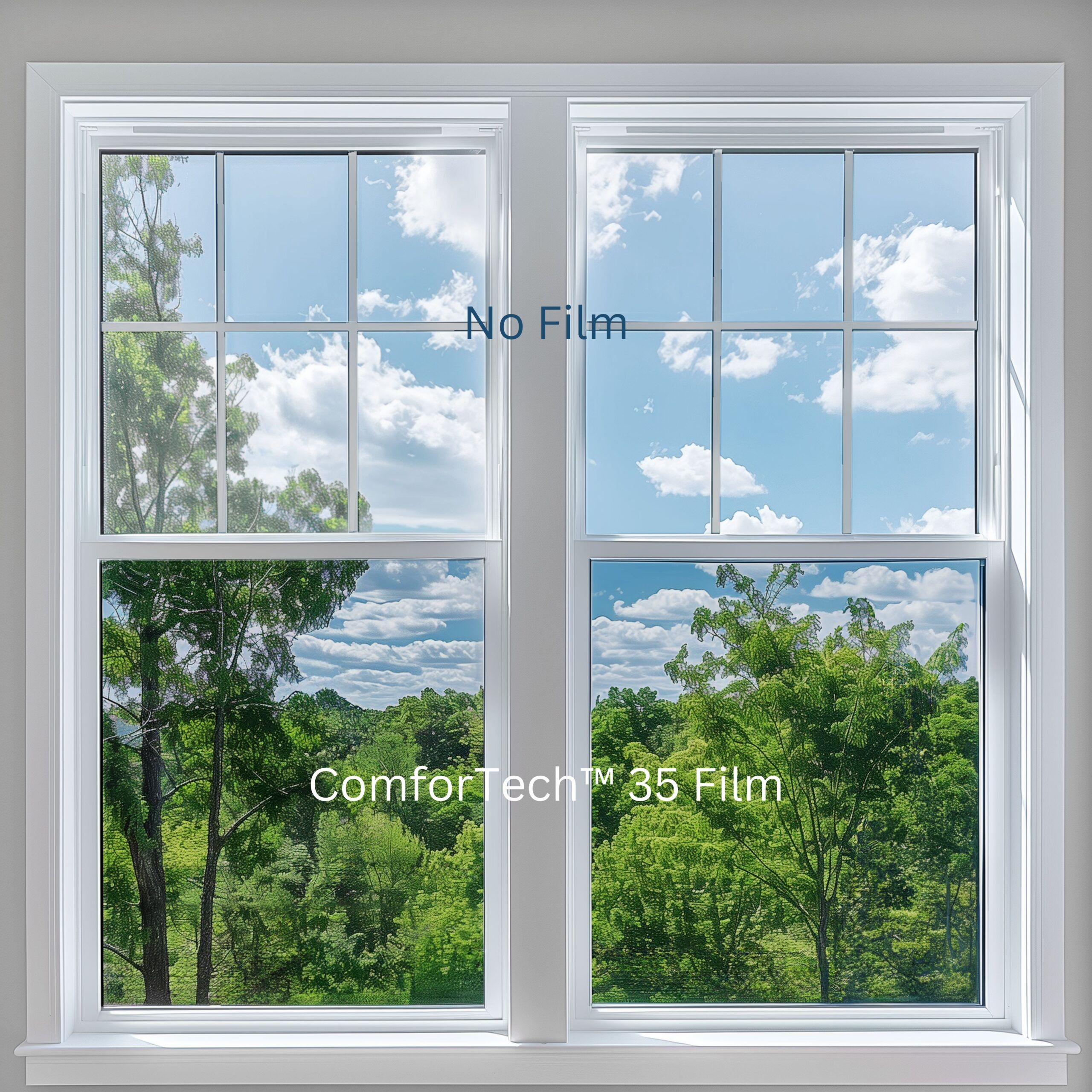Residential Window Tint: Maintain Your Home Cool in the Summer Heat
Residential Window Tint: Maintain Your Home Cool in the Summer Heat
Blog Article
How Residential Home Window Tinting Improves Your Home's Energy Performance
Residential home window tinting provides a compelling remedy for home owners looking for to improve energy efficiency within their living spaces. By using specialized films to home windows, it successfully minimizes warm transfer, thereby supporting interior temperatures and lessening the demand for extreme heating or air conditioning. This not only reduces power intake however likewise provides an extra comfy atmosphere by alleviating glow. Nevertheless, recognizing the nuances of exactly how tinting works and choosing the proper type for your home can be critical. Curiously, what variables should one consider prior to making this financial investment?
Comprehending Home Window Tinting
Comprehending window tinting is necessary for home owners seeking to boost both convenience and energy efficiency in their home. Residential Window Tint. Home window tinting includes the application of a thin film to the interior or exterior surface of glass windows. This movie can dramatically regulate the quantity of sunshine and heat that goes into a home, hence affecting interior climate problems
There are various kinds of window tinting films offered, each with unique properties. The performance of home window tinting is often gauged by its Visible Light Transmission (VLT) portion, which indicates just how much light can pass with the film.
Benefits of Power Effectiveness
Home window tinting not only improves aesthetic appeals however also plays a substantial role in boosting energy efficiency within household spaces. By lowering heat transfer through home windows, tinted movies create a much more secure interior climate, which can cause significant reductions in power intake for home heating and air conditioning. This energy performance translates into reduced energy expenses, giving home owners with considerable long-term cost savings.

In addition, home window tinting improves the comfort of living areas. By lessening glare and obstructing dangerous UV rays, tinted windows develop an even more pleasurable environment, which can bring about boosted well-being for occupants. The protection against UV rays additionally assists preserve furnishings and floor covering from fading, adding to the durability of household products.
How Tinting Functions
Tinting movies run with a combination of innovative materials and innovations designed to regulate the quantity of solar power getting in a home. Largely composed of polyester, these movies commonly incorporate ceramic or metallic fragments that reflect and soak up heat. This twin ability allows them to substantially minimize the penetration of ultraviolet (UV) rays and infrared radiation while permitting noticeable light to travel through.
The performance of window tinting is gauged by its solar warm gain coefficient (SHGC), which indicates just how much solar energy is sent through the home window. Reduced SHGC values are preferable as they represent higher warmth rejection. Furthermore, home window tints can feature a selection of shades, allowing property owners to tailor their visual preferences while improving power efficiency.
In addition, these films function as an obstacle, preventing heat loss during colder months by showing indoor heat back right into the home. This thermal insulation impact complements the air conditioning advantages obtained during warmer months, contributing to a balanced interior climate year-round. By managing solar energy efficiently, property home window tinting not only improves convenience but additionally plays an important view it duty in reducing energy consumption and lowering utility bills.
Choosing the Right Color

There are various kinds of window films readily available, consisting of dyed, metalized, and ceramic. Ceramic films provide superb heat control without jeopardizing exposure and are very durable, making them a popular option.
Noticeable light transmission (VLT) is an additional essential aspect, as it shows the quantity of natural light that can go through the colored glass. Home owners should select a tint with a VLT that enhances their lights choices while still providing adequate glare reduction.
Additionally, evaluating the solar warm gain coefficient (SHGC) can assist figure out exactly how well a color can obstruct warmth from sunshine. A reduced SHGC shows far better warmth control, inevitably enhancing power effectiveness.
Installment and Upkeep Tips
Correct installment and upkeep are crucial elements in taking full advantage of the benefits of residential home window tinting. To attain optimum results, it is advisable to work with a certified professional for installation. This makes certain that the color is used appropriately, staying clear of air bubbles, creases, or misalignment that can jeopardize performance. Specialists likewise use specialized techniques and devices, which can enhance the durability and effectiveness of the tint.
Following installation, upkeep is necessary to lengthen the life of the window film. It is advised to wait at the very least thirty day prior to cleaning up the colored windows to enable the glue to heal fully. When cleansing, make use of a soft cloth and a gentle, ammonia-free cleaner to avoid harming the film. Prevent rough products that could scratch the surface area.
Attending to these problems immediately can stop additional damage and keep power effectiveness. By adhering to these installation and maintenance pointers, property owners can ensure their window tinting navigate to this website proceeds to supply considerable energy savings and convenience for years to come.
Conclusion
Finally, residential home window tinting acts as a reliable option for boosting energy performance YOURURL.com within homes. By minimizing heat transfer and blocking damaging UV rays, home window movies add to decrease power usage and improved indoor comfort. The selection of suitable tinting materials, along with appropriate installment and upkeep, better maximizes these advantages. Eventually, window tinting represents a sustainable financial investment that not only reduces energy expenses but also promotes a comfy living environment throughout the year.
Home window tinting involves the application of a thin film to the interior or outside surface area of glass windows. By lowering warm transfer through home windows, colored movies create a much more secure indoor climate, which can lead to considerable reductions in power consumption for heating and cooling.The efficiency of home window tinting is measured by its solar warmth gain coefficient (SHGC), which suggests just how much solar power is transmitted through the home window. By handling solar energy efficiently, property home window tinting not just improves convenience yet likewise plays an important role in minimizing energy consumption and decreasing energy expenses.
By decreasing warm transfer and obstructing unsafe UV rays, window films contribute to lower energy consumption and enhanced interior convenience.
Report this page